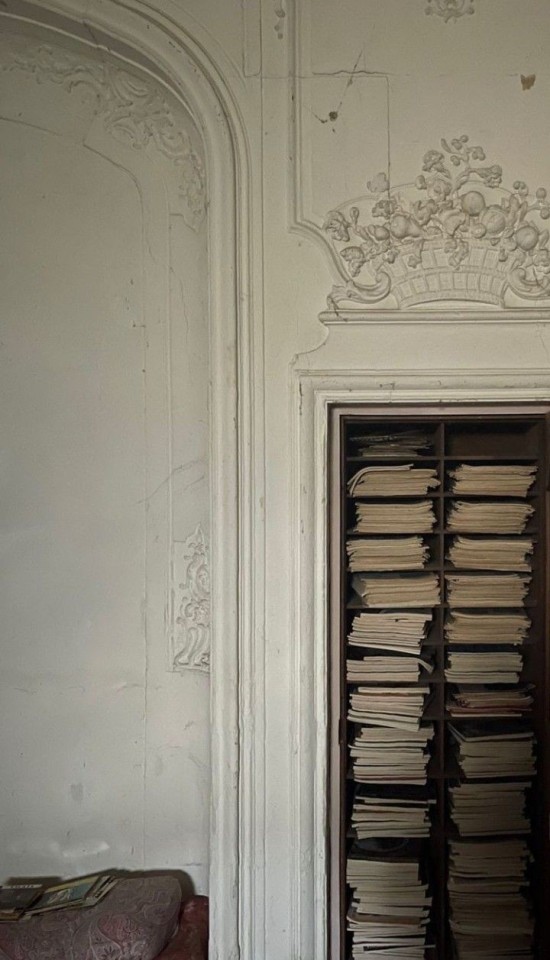Text
#QUANTUM IMMORTALITY
#0.1 physics, philosophy
Notes and references: Schrodingers cat, quantum mechanics, Copenhagen Interpretation, anthropic argumentation
Quantum immortality is an idea at the edge between philosophy and physics in the context of a many-worlds scenario or similar. If many possible worlds all play out, then a conscious observer's observations will be biased towards worlds in which he remains conscious. Therefore, you cannot witness yourself dead, so you never die.
In simple terms,if you shot yourself in the head, in one universe it would kill you, and in another it wouldn't. But you can only be conscious in a universe where you’re conscious (obviously), so if you do something contrived and then find yourself in an improbable state of affairs (the bullet quantum tunnels through your head, for instance), then the most likely explanation is multiple worlds have formed.
Therefore, suicide constitutes a test for whether or not the many-world interpretation is true. This is important, because these interpretations are generally considered untestable. If one really is in a state of eternal quantum immortality, one is essentially alone in it. Nothing can be verified except the existence of your own mind. (Look at Boltzmann Brain)
0 notes
Text
#QUANTUM HYDRODYNAMICS
01.
Lectures on classical and quantum hydrodynamics applied to trapped 1d quantum gases
Focus in this post is mainly the 1d Bose gas with Lieb-Liniger gas in a trapping potential, the basic concepts and methods are more general and can be adapted to other systems, for instance to quantum spin chains
Starting with basic concepts that underly “hydrodynamic approaches”, namely large-scale descriptions of the collec- tive motion of systems with many particles.
“Asymmetric Simple Exclusion Process”).
The model is defined as follows: particles live at discrete positions x ∈ aZ where a > 0 is the lattice spacing. They jump stochastically from one site to its nearest neighbors, with a hard core constraint (i.e. the number of particles nx at each site is 0 or 1). The rules are as follows. From time t to t+dt, a particle at x jumps to x+a with probability a/1dt if the site x+a is empty,andto x−a with probability q/adt (q>0) . The jump is forbidden if the target site is already occupied.
The rules are represented in Fig. 1. Notice that, crucially, for q ̸= 1 the transition rates are not symmetric under x → −x.

^ Fig 1: Allowed jumps in the ASEP, and their transition rates, here for lattice spacing a = 1. [Picture from A. Lazarescu’s “Physicist’s companion to current fluctuations”.]
Post 1/3
Inspired by J Dubail’s studies on Lectures On Statistical Field Theories, Florence
0 notes
Text






"Nothing ever ends poetically. It ends and we turn it into poetry. All that blood was never once beautiful. It was just red."
– Kait Rokowski
23K notes
·
View notes
Text
#CRIME SCENE ANALYSIS
Crime scene analysis: understanding the location, circumstances, and evidence at a crime scene. This includes studying blood patterns, bullet trajectories, and other physical evidence to piece together what happened and when.
Samples That May be Collected at a Crime Scene
A wide variety of physical evidence can be collected at a scene that is deemed valuable (“probative”) for collection and investigation:
biological evidence (e.g., blood, body fluids, hair and other tissues)
latent print evidence (e.g., fingerprints, palm prints, foot prints)
footwear and tire track evidence
trace evidence (e.g., fibers, soil, vegetation, glass fragments)
digital evidence (e.g., cell phone records, Internet logs, email messages)
tool and tool mark evidence
drug evidence
firearm evidence
To help ensure that evidence isn’t inadvertently damaged or destroyed:
Photograph and document the scene
Collect trace materials (especially from probable points of entry)
Collect low-level DNA evidence by swabbing areas of likely contact
Collect other items that may contain biological evidence
Locate and collect latent fingerprints
Who Examines Crime Scenes
The number and type of professional(s) responsible for investigating a scene and collecting evidence largely depends on the type of crime and the resources of the law enforcement agency. Larger agencies often have dedicated, highly trained crime scene specialists, while smaller agencies may require that first responders or detectives process the scene in addition to their other duties.
In many instances, a case will be investigated by a detective who is responsible for interviewing persons of interest and victims, pursuing leads and piecing together the information that is developed from the materials collected at the scene. The detective works in tandem with a team of crime scene personnel who search the scene and collect the evidence. The crime scene investigation team may consist of crime scene photographers and evidence collection personnel specializing in gathering specific evidence such as latent prints, DNA, trace evidence and the like.
In the United States, there are no national requirements that must be met to serve as a crime scene investigator; however, investigators can achieve four levels of certification through the International Association for Identification (IAI) that demonstrate their proficiency:
Certified Crime Scene Investigator
Certified Crime Scene Analyst
Certified Crime Scene Reconstructionist
Certified Senior Crime Scene Analyst
How a Crime Scene Investigation is Conducted
The circumstances that investigators encounter at the scene will largely dictate the approach used to process the scene. A homicide will likely require different treatment and processing than a burglary. However, to ensure a thorough process, the seven steps outlined below are often followed. These steps can be conducted in a different order, combined or even skipped altogether to meet the needs of the situation.
1. Establish the scene dimensions and identify potential safety and health hazards - Investigators initially locate the “focal point” of the scene, the main area of disturbance. This could be a ransacked bedroom, the area where an attack occurred, or the room in which a victim was found. Radiating out from that point, investigators establish an area that is sizeable enough to likely contain all relevant physical evidence that may be present. It is easier for investigators to condense the size of a scene at a later point than to discover that sensitive evidence outside the scene has been damaged or destroyed by other responders, media or onlookers.
In addition, potential paths of perpetrator entry/exit are identified. Safety is of paramount importance during the initial approach to the scene. Weapons, biohazards, chemical hazards and even intentional traps could be waiting for responders. If medical, fire or coroners will be on scene, they will need to be advised regarding evidentiary issues as well.
2. Establish security - According to Locard’s Exchange Principle, every person who enters or exits the scene will add or subtract material from the crime scene, so it’s crucial to quickly secure the area. To control access, the scene may be cordoned off with yellow crime scene tape, cones or by other means.
In addition, a common entryway is often established that all crime scene personnel will use to enter and exit the scene and all people entering or leaving the scene are documented once the boundaries have been established. Additional areas for consultation and evidence storage may also be established if necessary.
3. Plan, communicate and coordinate - Before collecting evidence, investigators must first develop a theory regarding the type of offense that occurred.
Knowing the type of crime will help investigators anticipate the evidence that could be present. This may require gathering information from witnesses or persons of interest. Based on this information, the crime scene team will develop an evidence-collection strategy taking into consideration weather conditions, time of day and other factors. Additional forensic resources may also be requested to handle special situations.
4. Conduct a primary survey/walkthrough - An initial survey of the scene is then conducted to prioritize evidence collection. During this walkthrough, the lead investigator will identify potentially valuable evidence, take notes and capture initial photographs of the scene and the evidence.
The crime scene is documented to record conditions such as whether lights were on or off, the position of shades and doors, position of movable furniture, any smells present, the temperature of the scene, etc. To facilitate this process, crime scene specialists may create an evidence-free pathway leading to the primary area of interest by conducting a thorough sweep for evidence in that area.
5. Document and process the scene - With a plan in place, the crime scene team conducts a thorough, coordinated investigation of the scene, collecting all probative evidence. This entails detailed documentation with digital and video cameras or, if available, a 3-D scanner.
For some situations, sketches and diagrams are also created. During the evidence-collection process, it is crucial that the crime scene investigator follow proper procedures for collecting, packaging and preserving the evidence, especially if it is of a biological nature. Biological evidence can be destroyed or damaged by weather conditions, individuals can inadvertently contaminate it, or it can be overlooked entirely if alternate light sources are not used to inspect the scene.
6. Conduct a secondary survey/review - To ensure that the scene has been thoroughly searched, a second survey of the area is conducted as a quality control step.
How and Where Tests on the Evidence are Conducted
The most probative evidence will be sent to either a forensic laboratory or, if the laboratory does not have an expert in that forensic discipline, to an outside analyst for examination. To help identify the evidence that is most valuable, the crime scene personnel may conduct initial screening tests, called presumptive tests, at the scene.
These tests can be useful in determining the type of substance present—whether it’s a toxin or a drug, a stain that contains body fluids, or even whether a dried red substance found in the kitchen is blood or ketchup.
Presumptive tests allow investigators to narrow the field of possibilities to a certain class of substance, but they are not specific enough to confirm the presence of specific compounds. In addition to helping provide clues to indicate how the crime occurred and who may have been involved, presumptive tests can also help reduce the quantity of evidence that is submitted to the lab to include only the most important items. This helps to expedite processing at the laboratory.
As technology advances and devices become more portable and affordable, additional testing of evidence will likely be conducted at the scene.
1 note
·
View note
Text
#VICTIMOLOGY
0.1
Every documentary and every video and newspaper and everything, all talk about the killer and the perpetrators. And we never think of the victim and that there’s a person who is affected by all of it
People like to idolise killers .. I know people who have said they do criminology and people ask them what field and what their “favourite serial killers” are..
The same people idolise serial killers, rapists and so on..purely based on their charm, and not their actions or the hurt they caused.
If it’s a black guy walking down the street
Getting shot by a white beautiful blonde guy ,
Well then it’s the black guys fault.
That’s what victimology initially was.
Invented by a group of white guys (wow what a coincidence that they’re white) about how it’s the victims fault
Women’s fault and black’s fault for having a live body
But now it’s about understanding the victim and raising awareness, how we can help and the history of it all;
The consequences of the perpetrators actions
The fact that a victim has to be coping in a certain way.. You expect a victim to be crying and breaking down and as soon as they don’t comply to society’s norms everyone starts doubting the victim
But it’s not like that. When you go to a funeral there are always different people who all have different coping mechanisms..maybe some are laughing, some are crying, some aren’t showing any emotions , some are on their phones
And also the fact that rape in marriages wasn’t a crime until recently and that people think rape is “sex gone wrong” or “love gone wrong” or just a little mishap. Rape is not sex. It’s an act of violence
And until 2013 fbi didn’t even recognise that men could be raped
The old rape definition is “the carnal knowledge of a female, forcibly and against her will”
And the new one is as following “The penetration, no matter how slight, of the vagina or anus with any body part or object, or oral penetration by a sex organ of another person, without the consent of the victim”
Which I think is a lot better worded.
Fin. A brief introduction to VICTIMOLOGY.
1 note
·
View note